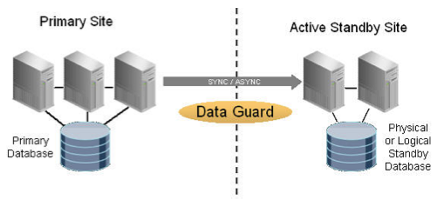- Business Continuity for Oracle E-Business Release 12 Using Oracle 11g Physical Standby Database (Note 1070033.1)
- Business Continuity for Oracle E-Business Release 11i Using Oracle 11g Physical Standby Database (Note 1068913.1)

Physical Standby Provides a physically identical copy of the primary database, with on-disk database structures that are identical to the primary database on a block-for-block basis. The database schema, including indexes, are the same. A physical standby database is kept synchronized with the primary database by recovering the redo data received from the primary database. Logical Standby Contains the same logical information as the primary database, although the physical organization and structure of the data can be different. It is kept synchronized with the primary database by transforming the data in the redo logs received from the primary database into SQL statements and then executing the SQL statements on the standby database. Snapshot Standby A fully updatable standby database. Like a physical or logical standby database, a snapshot standby database receives and archives redo data from a primary database. Unlike a physical or logical standby database, a snapshot standby database does not apply the redo data that it receives.These new notes detail the steps for setting up the first of these types, a Physical Standby database using Oracle Data Guard. New EBS Roadmap documentations, too Our Applications Technology Group database architects have also released two new roadmap documents covering the latest options for High Availability, Real Application Clusters, and Maximum Availability Architectures: Related Articles
